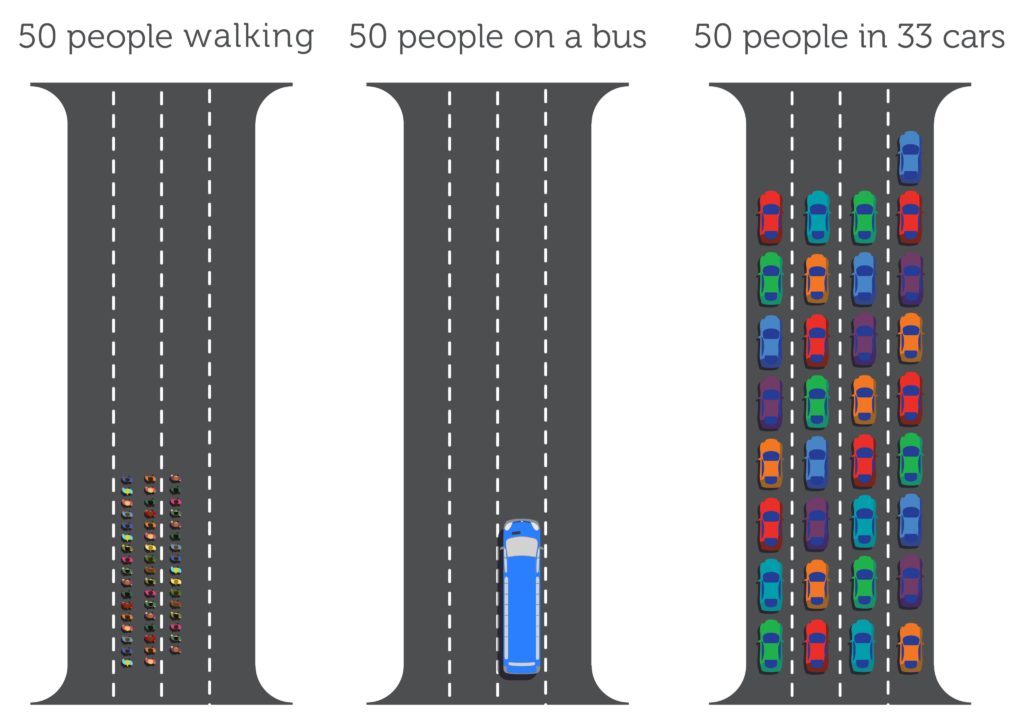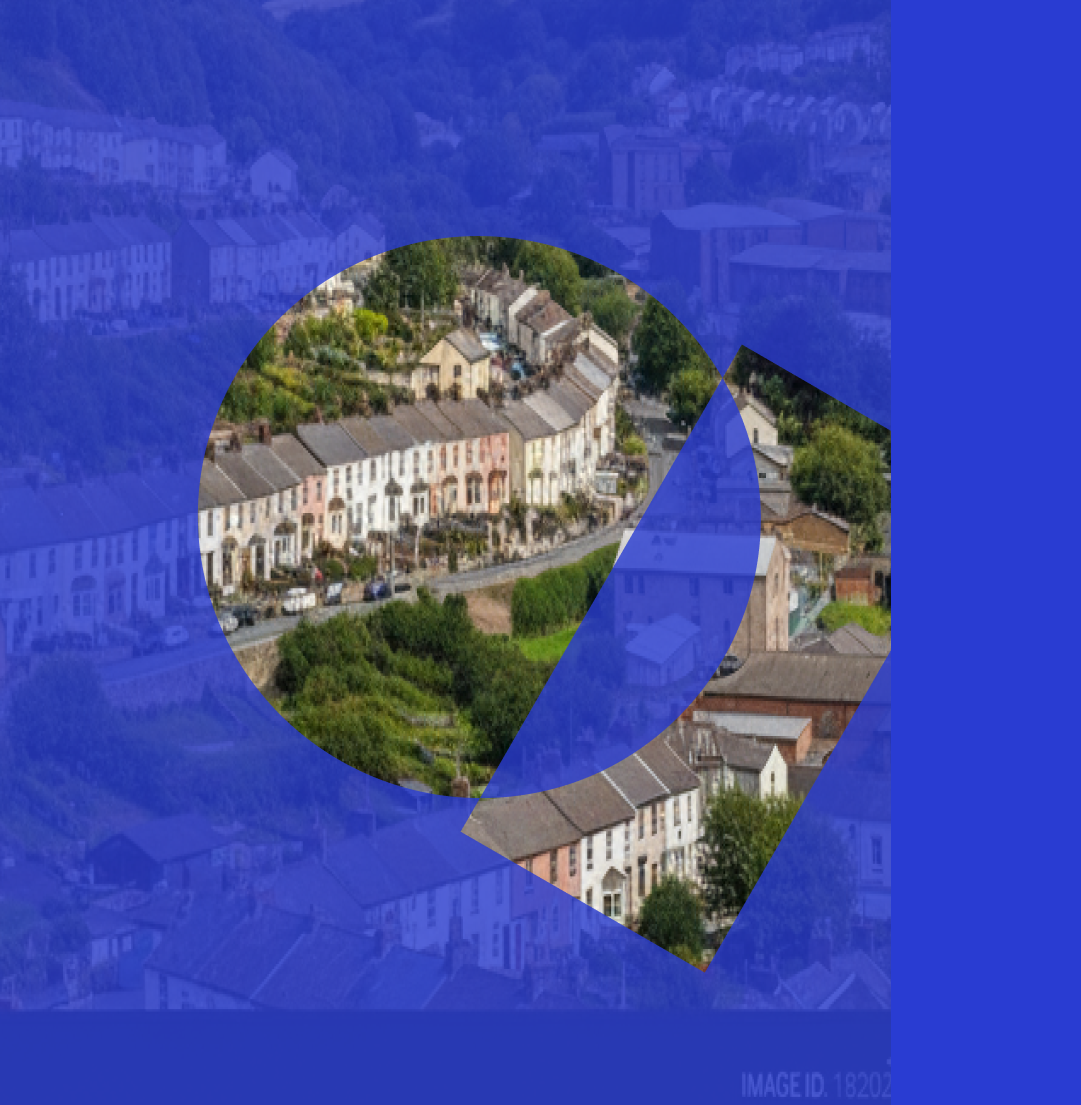Why EVs are not our only ticket to a greener, healthier future
A recent BBC article highlighted a slightly inconvenient truth about our quest for an electric vehicle (EV) revolution. Yes, EV’s will make our air cleaner, streets will be a lot quieter, and the government’s net-zero goals much closer to fruition, but these great achievements will do nothing to ease the UK’s bumper to bumper use of kerb-space, and clogged and congested roads.
So how do we manage a healthier future for our streets? EV’s will play a huge role, that is for certain, but a mixed approach will be crucial if we are to create truly sustainable and more liveable towns and cities. Over the course of this blog we’ll take a look at the challenge at hand and look at how a blended approach to mobility is where a healthier future lies.
Car ownership and kerbside demand in the UK
If you think there are a lot more cars on the road now than there were a generation ago, well you’re absolutely right. Over the past 25 years, the number of cars in Britain has risen 42.5%. If growth continues at the same pace, we could have 45 million cars on British roads by 2045.
A small but growing part of this rise comes from the electric car market. EV ownership is growing quickly, with nearly 300,000 pure-electric cars on UK roads at the end of May 2021, and more than 600,000 plug-in models, if including plug-in hybrids.
That’s an awful lot of cars who often require kerb-space to park, not taking into account that EVs don’t just require access to roads and parking but also charging.
In London there are more than three million licensed vehicles with the average car parked for at least 95 per cent of the time. TfL data analysed by the Centre for London shows that 43 per cent of all cars in London are parked on-street (at the kerbside) rather than off-street (in parking lots, garages and driveways). A simple calculation taking into account the size of a standard parking space shows that parked vehicles take up well over 14 km2 (1,400 hectares) of space on London roads and streets – or the size of 10 Hyde Parks.
Private car ownership is the largest piece of the kerbside demand puzzle but it’s not the only piece. The pandemic saw a surge in home delivery and rapidly changing working behaviours. These have brought their own kerbside challenges as cars remain parked outside homes for much longer periods of time resulting in delivery drivers struggling to find appropriate parking.
If we’re talking about adding more cars to our roads, whether that’s EVs or delivery vehicles, they are going to be competing for an already over-subscribed space on our roads.
We’re all stuck in traffic
Any increase in drivers on the road and increase in kerbside demand comes with an increase in congestion. The cars may be lean, green, environmentally friendly machines but they will be stuck in traffic.
The findings from the pre-pandemic 2019 Inrix Global Traffic Scorecard showed that on average, Brits waste 115 hours in congestion, costing the country £6.9 billion, an average of £894 per driver.
It’s clear that congestion costs drivers and our economy in time and money but did you know that congestion negatively affects our health? Yes EVs cut emissions which is beneficial for lung function, asthma and cardiovascular and respiratory health, and yes they tend to be quiet compared to internal combustion engine vehicles but congestion can still cause noise pollution and stress for drivers and residents alike.
Noise pollution and stress have a number of health and wellbeing consequences. The most prevalent negative effect of congestion is annoyance, but there are a number of other effects including sleep disturbance, hearing impairment, heightened cortisol in the blood (a marker of stress) and, impairment of cognitive performance in children, as well as increased risk of developing cardiovascular disease in those exposed long-term to noise pollution and stress.
A mixed approach
It’s clear that if we are to create healthier, more liveable towns and cities we need to think beyond the electric car. They certainly play an important role but they cannot be our only solution.
A mixed approach of council led initiatives and mobility options will be key in future-proofing our towns and cities. This mix could include:
Public transport
Public transport will always play a crucial mobility role within UK towns and cities however consistent reinvestment is needed to encourage its use and prevalence. A good public transport system means residents and commuters may not need that second car, and in many cities with excellent public transport there is a case for not even owning a first car.
The use of public transport removes a significant number of cars from our roads as the below image from NEXTransit illustrates: 
Low Traffic Neighbourhoods
A 2020 study by Westminster University, University of Cambridge, and the London School of Hygiene and Tropical Medicine showed that interventions such as low traffic neighbourhoods (LTNs) can yield substantial health benefits, and a reduction in congestion and use of kerb-space. In Walthamstow Village, an LTN was implemented in 2015, a year later a study revealed that once the LTNs had been made permanent, the area experienced 56% reduction in vehicle numbers.
Active travel
In the UK 40% of all trips made are under 2 miles long. According to research conducted by the Department for Transport 60% of those trips are done by motor vehicle. For the able-bodied, many of those trips could be done on foot or bike. By taking up active travel cars are more frequently not driven thereby improving congestion, noise pollution and improving the overall health of the traveller and the areas they travel through.
Road pricing
Road pricing could be used to charge drivers for their use of the roads, whereby frequent drivers pay more than infrequent drivers. Schemes are skewed to encourage drivers to use less congested routes or drive at less busy times of the day. Initiatives like road pricing can reduce traffic congestion and use of kerb-space, and is a fairer way of charging drivers than an indiscriminate road tax.
Shared mobility
There will always be a need for cars on our roads and there are a multitude of reasons for this. Solutions such as shared mobility can ensure that those who need a car can access one on demand. Whether that’s for longer trips, for transporting groups of people or goods, or for general accessibility reasons, shared mobility enables users to pre-book a vehicle to suit their needs.
Dedicated bays dotted around residential areas means users of shared mobility do not have to go far to access a vehicle, reducing their need for a privately owned vehicle and reducing the amount of road and kerb-space used.
Many councils are already taking steps towards a mixed approach. We’re currently working with a number of authorities to help them understand and analyse their kerbside assets and to put in place the innovative tools and processes needed to implement initiatives designed to create healthier communities.
If you’d like to learn more about our work with local authorities, reach out to one of our kerb-experts today.





